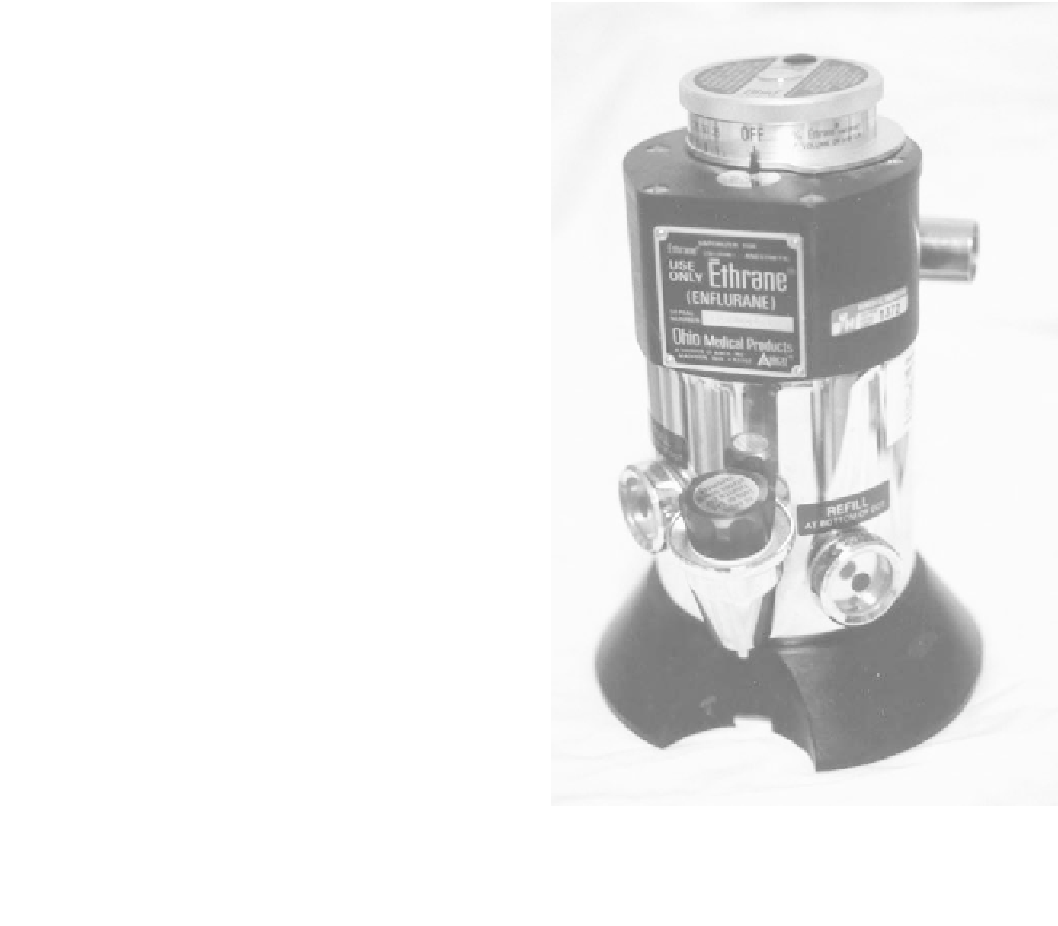Biomedical Engineering Reference
In-Depth Information
a hypoxic mixture. This introduces significant associated
construction costs and complexity. As technology and
practice evolve, people are questioning the long-term use
of nitrous oxide and wonder whether it still should be
made available in all machines. To compensate for
potential supply pressure changes that could alter flow
settings from one machine to the next connected to
a common supply line, some manufactures use two-stage
pressure reduction to minimize the effects.
use their right hand for holding the mask, and their left
for manual ventilation, it is very difficult to adapt. To
help understand this, one need only try brushing one's
teeth with the nondominant hand. It can be done, but
would one want a person's life in one's hands when
doing it the first few times? The patient's orientation
affects access to the endotracheal tube and ease of
inspecting lines, leads, and electrodes. The patient
could be prepped and draped so that it is very difficult
to reach almost anything.
Gas mixing
Vaporizers
Traditionally constructed (mechanical) machines use
a needle valve combined with a rotameter for each supply
gas to control flow. The rotameters all feed a common
output, thereby regulating gas composition fed to the
vaporizers. After mixing with the inhalation agent de-
livered by the vaporizer, the combined mixture is called
the ''fresh gas flow'' (FGF), delivered at the common gas
outlet. Some electronic machines have settings for total
gas flow and oxygen percentage that control gas-flow
rates independently.
There is a check valve built into the common gas
outlet on Datex-Ohmeda machines to prevent breathing-
circuit pressures from back-pressurizing the vaporizers.
This valve requires a negative pressure, to open and
correctly perform a leak test on the low-pressure system.
If a positive-pressure test is performed, it will not open
this valve, and the machine will not be tested properly.
Drager machines do not have this check valve.
Vaporizers (
Figure 4.4-3
) add and control the concen-
tration of volatile inhalation anesthetic agent in the gas
delivered to the machine's common gas outlet. In order
to understand the way a vaporizer functions, the reader
first must be familiar with a few terms and principles of
Machine and space layout
Much of the machine consists simply of shelf space,
essentially a convenient location to store monitoring
equipment and supplies needed when performing anes-
thesia. A working surface and tabletop space is an im-
portant location to place medications and other items
needed within hands' reach of the physician. There is also
a chest of drawers to store supplies and other items
needed for use with the machine.
People adjust the layout of almost anything they use
regularly. They become accustomed to what they have,
and grow to like where things are positioned. If the
things with which one interfaces change radically, it
affects one's comfort level. One is more likely to make
mistakes by turning the wrong knob, leading into ad-
ditional confusion because of rituals and habits of
looking for things in one location. Consistency, partic-
ularly at
large institutions, has
its advantages and
disadvantages.
The physical space layout and the way the machine
is positioned in the room can be significant. If the user
is forced, due to an awkward machine orientation, to
Figure 4.4-3 Vaporizer.







